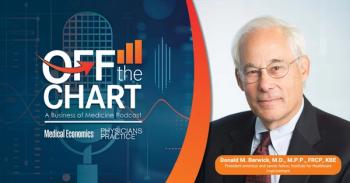
Breaking Barriers to Innovation in Healthcare Delivery
Physicians can innovate the healthcare delivery system, they just have to overcome these four often seen barriers in doing so.
For decades, tremendous opportunities for innovation in healthcare delivery have been bypassed, mostly as a result of misaligned incentives. Incredibly, these are innovations that deliver double wins - better outcomes for patients and simultaneously, lower costs to the system - and often double-digit percentage gains on both dimensions. They generally take the form of small physician-led full-time teams that redesign care and deliver better care to a particular patient population.
There are a few hundred examples of such efforts nationwide. There is room for tens of thousands more … if we can knock down the barriers that stand in the way:
Physician cynicism. Understandably, many physicians feel beaten down by all of the change that has come at them over the course of their careers. The muck of administrative work seems only to deepen. Many physicians feel so victimized by the system that they have become blind to the opportunities to improve it. And yet, the opportunities to recreate care for patients - and to reinvigorate the work lives of physicians -are nearer at hand than most imagine.
Physicians need a concrete starting point. Innovation can feel maddeningly wide open, but innovation in healthcare delivery doesn't need be mysterious.
Most physician innovators begin by focusing on a patient population that they feel passionately about serving … a group that shares a common set of most-pressing health care needs. Think about a group of patients for whom you would like to improve care. It could be frail elders who have difficulty getting out of the home, children with complex medical conditions, or low-income adults about to be discharged from the hospital. It could be diabetics, CHF patients, or patients who suffer chronic low back pain.
Now, ask yourself: How is the system failing these patients today? Then, and this is simultaneously the fun and radical part, forget everything you know about how healthcare works today. In particular, forget the rules about what you can do and what you can’t, what you will be paid for and what you won’t, how long you may spend with each patient, how “productive” you need to be, and so forth.
With your newfound freedom, redesign care from scratch with these patients. Give yourself permission to completely rethink what you do at work each day. While you’re at it, imagine you can build a team from the ground up. You write the job descriptions. You do the hiring. You design the care processes from scratch.
A question: If you had this level of autonomy and this span of control, could you improve care? Could you simultaneously deliver better outcomes and lower costs? There are dozens of examples across the country that suggest that the answer is almost certainly YES.
When physician innovators have opportunities to redesign care from scratch, they take aim at the most commonplace failures in the system. They standardize care processes where it makes sense to do so, spend more time on care planning and care coordination, shift spending upstream to keep patients healthier, and spend the necessary time talking patients through consequential treatment decisions, especially near end of life. It should be no surprise at all that such actions deliver double wins - both better outcomes and reduced costs.
Fee for service medicine. Despite the impressive results, these efforts are generally money losers for providers under fee-for-service reimbursement. Fortunately, times are changing. There are few reasons to feel more optimistic about the future of the US healthcare system than the steady and even accelerating pace of payment reform. Accountable care opens the doors more widely than ever before for innovation in healthcare delivery.
Oversubscription to two dominant innovation models. When asked to imagine how innovation works, most leaders gravitate one of two common models. First, the egalitarian model. The core belief here is that everyone can be an innovator, every day. Everyone can come up with ideas and even take some initiative. The shortcoming of this model is that any one individual has very limited access to resources … not much more than a bit of free time.
The second model is the superhero model, which is just the opposite, really. Here, the idea is to invest in great people who are capable of coming up with great ideas and wait for the results. The most common failures here are excessive commitments to high-risk proposals and overspending on the idea development phase with inadequate anticipation of what it will take to get breakthrough proposals all the way to the finish line.
Innovations in healthcare delivery require a middle option. Breakthrough thinking is generally not needed, as the principles at play are straightforward and have been talked about for decades. What is needed, however, are investments that are somewhat larger than what is possible through an egalitarian approach – specifically, investments in small full-time teams that have complete flexibility to redesign care with an eye towards a specific patient population.
The pathway forward in healthcare is this: 1) Change the payment model. 2) Invest in small full-time teams that redesign care for specific patient populations. 3) Unleash physician-led innovation.
Chris Trimble is an adjunct professor at the Tuck School of Business at Dartmouth and The Dartmouth Institute for Health Policy and Clinical Practice. He is the author of six books, including How Physicians Can Fix Health Care: One Innovation at a Time (American Association for Physician Leadership, 2015).
Newsletter
Optimize your practice with the Physicians Practice newsletter, offering management pearls, leadership tips, and business strategies tailored for practice administrators and physicians of any specialty.














